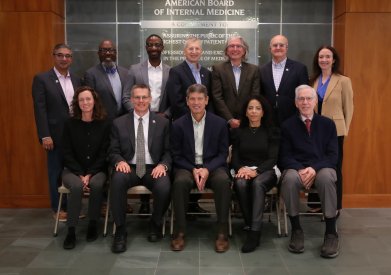Malpractice and Choosing Wisely®: Lessons From My Hometown
June 6, 2014
I recently spoke to several health system/hospital quality experts and physician groups in Upstate New York about the Choosing Wisely campaign. I was looking forward to speaking about the campaign to a hometown crowd (I was born and raised in Syracuse) and an audience that included my former next-door neighbor, the regional president of Excellus. The campaign has been so well-received by audiences all over the country that I was expecting a particularly warm reception at home. How wrong I was! The audience mostly included physicians practicing in relatively small groups. They insisted–quite vocally I might add–that without malpractice reform, the campaign’s recommendations were putting them at higher risk for malpractice. They questioned why the campaign was not tackling this issue.
This isn’t the first time malpractice and Choosing Wisely have been linked. Prior to joining the campaign, the American College of Emergency Physicians was vocal in its wish for the campaign to address tort reform. Malpractice is a real issue and some physicians deliver defensive medicine out of fear of malpractice and/or the experience of previously being sued.
One of my hosts at the meeting, Dr. Arthur Vercillo, regional president of Excellus Blue Cross Blue Shield and a general surgeon, assuaged the fears of the audience by stressing that the specialty societies’ recommendations are not hard and fast rules; they aren’t absolutes. He also spoke about using the campaign recommendations to avoid malpractice through documenting in medical records the tests and procedures that the patient and physicians mutually agreed not to do. He focused on the significance and importance of patient/physician conversations about what care is best for the patient and what care is unnecessary—the basic concept of the campaign.
This interaction made me think about how vulnerable physicians—particularly primary care physicians—must feel in this rapidly changing landscape. I’m sure to some, the Choosing Wisely recommendations probably sound like yet another demand and one more thing that puts the primary care physician at financial and psychological risk. I do believe, however, that the campaign supports physicians in difficult conversations and thus has the potential to help mitigate the risk of malpractice lawsuits.
- The campaign’s promotion of “the conversation” between patients and physicians will hopefully result in enhanced communication skills of physicians. Research shows there is a link between poor communication skills and malpractice claims. Documenting these shared decisions might protect the physician from malpractice as discussed previously.
- Enhanced patient-physician communication can contribute to long-term relationships, which is another antidote to malpractice.
- Adherence to guidelines and recommendations certainly may not be a fool-proof safety mechanism against malpractice but non-adherence is often worse.
- Addressing physicians’ ability to deal with ambiguity and uncertainty may initiate a new focus on the quality and dynamics of medical decision-making that underlies defensive medicine.
- The campaign sheds light on the lack of knowledge of many physicians about how to discuss risks of tests and procedures with their patients. For example, there is confusion about communicating with the patient about absolute risks rather than relative risks and speaking about mortality rates rather than survival rates. (See Risk Savvy: How to Make Good Decisions by Gerd Gigerenzer).
Choosing Wisely can’t solve the malpractice problem but the conversations it inspires may help to lessen its risk.

Daniel B. Wolfson
EVP and COO, ABIM Foundation


